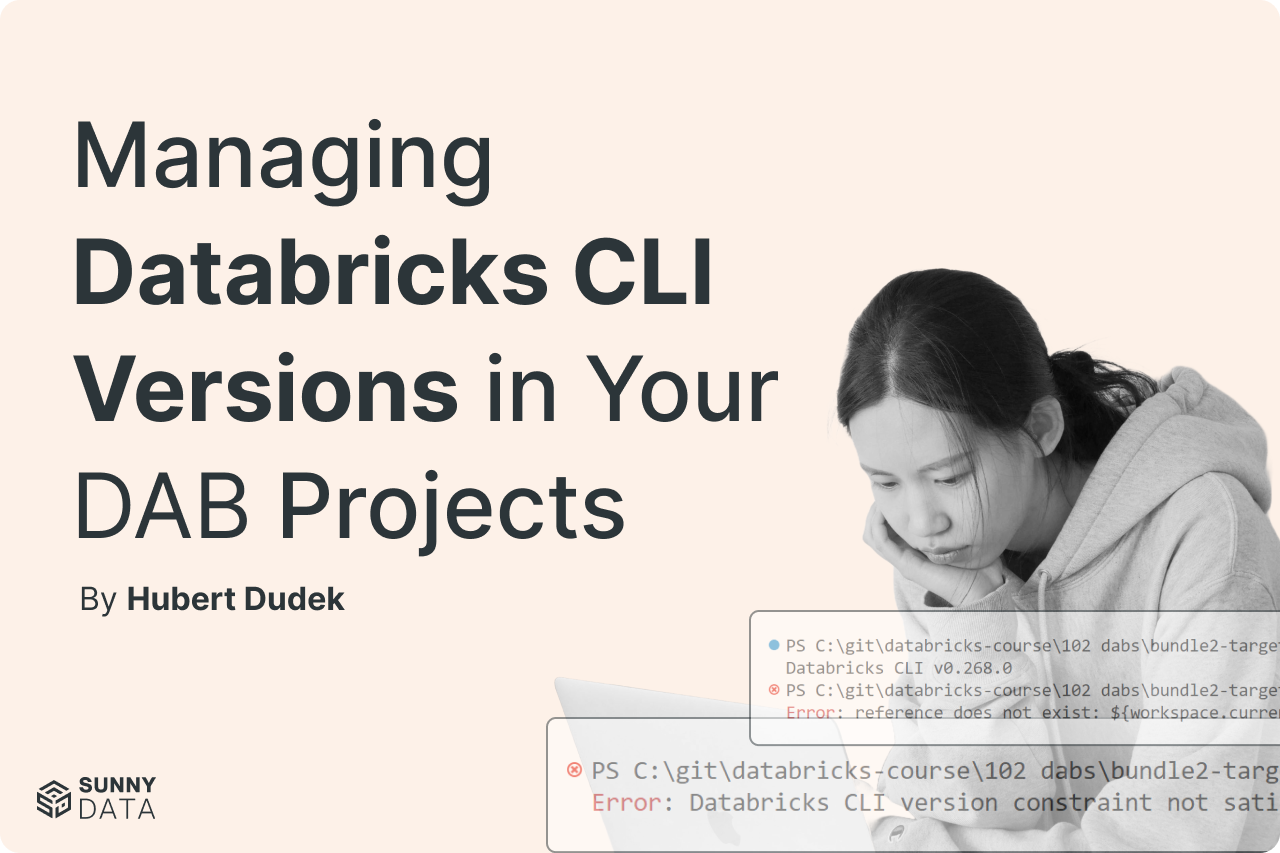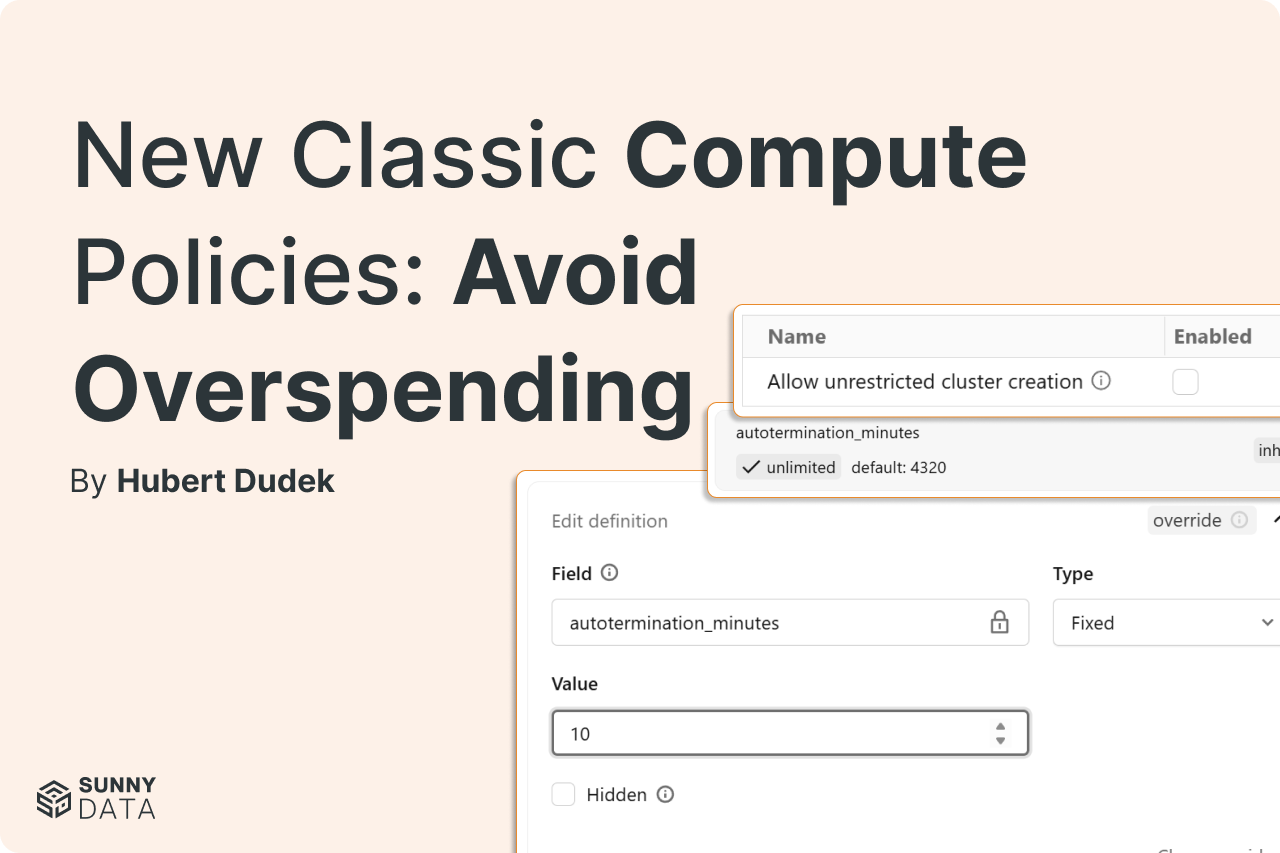Resources and insights
Our Blog
Explore insights and practical tips on mastering Databricks Data Intelligence Platform and the full spectrum of today's modern data ecosystem.
Connecting ChatGPT to Your Databricks SQL Warehouse
Learn how to connect ChatGPT to your Databricks SQL Warehouse using Model Context Protocol (MCP). Step-by-step guide with screenshots and tips.
New Classic Compute Policies: Prevent Overspending
Configure Databricks compute policies to prevent accidental overspending. Step-by-step guide to setting auto-termination, worker limits, and access controls that protect your budget without limiting productivity.
New Databricks INSERT Features: INSERT REPLACE ON and INSERT REPLACE USING
Databricks SQL introduces two powerful new INSERT commands: INSERT REPLACE ON for conditional record replacement and INSERT REPLACE USING for complete partition overwrites. These Delta-native features eliminate complex workarounds while maintaining data integrity. Available in Databricks Runtime 16.3+ and 17.1+ respectively, these commands provide developers with precise control over data updates and partition management in modern data engineering workflows.
The Hidden Benefits of Databricks Serverless
Most Databricks cost comparisons focus only on compute pricing, missing two critical factors that can save thousands monthly. Learn how serverless waives private link transfer fees (up to $10/TB) and provides persistent remote caching that survives warehouse restarts - hidden benefits that often justify the serverless premium entirely.
End The Data Engineering Nightmare with Metrics.
Learn how Databricks metrics views simplify SQL analytics by centralizing business rules and eliminating repetitive code. Complete tutorial with examples.
Bridge the Gap in Your Data Stack: Leverage Databricks BI/AI to Enhance Traditional BI
Bridge the gap in your data architecture by strategically combining Databricks BI/AI with traditional business intelligence tools. Learn how to reduce licensing costs, improve dashboard performance, and implement a hybrid approach that leverages the best of both worlds. This practical guide shows you when to use native Databricks capabilities versus tools like Power BI for optimal cost-efficiency and performance.
Cost allocation, cloud tags, and other relevant things on Databricks
In this three-part video series, Databricks MVP Josue Bogran and Greg Kroleski from Databricks’ “Money Team” discuss cost allocation, tagging best practices, cloud innovations, and performance enhancements. The series explores Databricks' efforts to optimize cost reporting, leverage AI for insights, and empower businesses to make smarter, growth-driven decisions in 2024 and beyond.
Seamless Data Integration: SAP to Databricks
Learn how to integrate SAP data into Databricks with this comprehensive blog. Discover the essential components of the SAP ecosystem, including SAP HANA, S/4HANA, and BTP, and explore proven integration methods using SparkJDBC and Azure Data Factory. Perfect for data engineers and architects looking to combine SAP's enterprise management capabilities with Databricks' advanced analytics.
5 Reasons Why We Recommend Databricks
Discover why Databricks stands out as the leading data platform in this insightful blog. From unified data management to cost efficiency, unmatched performance, and robust analytics, Josue Bogran explains the top 5 reasons Databricks excels in the competitive landscape. Learn how Databricks balances innovation, user-centric design, and industry versatility to deliver exceptional results.
Performance, Benchmarks, and Optimization Tips for Databricks Users
Josue Bogran interviews Jeremy Lewallen from Databricks’ Performance Team, exploring benchmarks, storage cost optimization, rightsizing SQL Serverless Compute, and common compute mistakes. Discover why Databricks continually enhances performance, tips for using the latest DBRs, and how their innovations provide a fast, efficient, and developer-friendly data platform.
Redshift to Databricks - Part 2: Technical Implementation Guide
This guide dives into the technical steps required to migrate from Amazon Redshift to Databricks. Covering everything from discovery and data evaluation to security protocols and cost estimation, it offers detailed, practical strategies for managing dependencies, optimizing queries, and planning for future scalability within Databricks’ robust ecosystem.
Redshift to Databricks - Part 1: Why and How to Start Your Migration
This blog introduces the strategic benefits and challenges of migrating from Amazon Redshift to Databricks. It covers Redshift’s legacy limitations, Databricks' advantages, and critical migration factors. The article provides an overview of key planning steps, including architecture considerations and phased migration strategies, setting the stage for technical execution in the upcoming part two.
Sigma + Databricks: A Great BI Tool for the Data Intelligence Platform
Sigma offers a user-friendly BI tool ideal for building and managing dashboards. With intuitive features, seamless embedding, and live data connections, it excels in usability. However, its steep pricing and lack of Git integration may deter small businesses. SunnyData recommends Sigma for startups and enterprises seeking responsive, customizable solutions.
How to Migrate Databricks from GCP to Azure or AWS
This blog explores the migration process of Databricks from one cloud provider (GCP) to another (Azure or AWS). It emphasizes using tools like Terraform for seamless migration, best practices for handling resources, data, and configurations, and discusses strategic reasons for switching cloud platforms.
Day 2 of Databricks vs Snowflake vs Fabric: Evaluating The Toolset
Databricks vs. Snowflake vs. Fabric evaluates key aspects like toolsets, partner ecosystems, flexibility, ease of use, and overall business value. We break down each platform's strengths and weaknesses to guide you in choosing the best for your data strategy.


















